
Stolen Life is a 1939 British drama film directed by Paul Czinner and starring Michael Redgrave, Elisabeth Bergner and Wilfrid Lawson.

The Rossiter Case is a 1951 British crime film directed by Francis Searle and starring Helen Shingler, Clement McCallin, Sheila Burrell and Stanley Baker in a small role. A man has an affair with his disabled wife's sister - and when the sister is murdered, suspicion falls on him.

Spring Meeting is a 1941 British comedy film directed by Walter C. Mycroft and Norman Lee and starring Enid Stamp-Taylor, Michael Wilding, Basil Sydney and Sarah Churchill. It was based on a 1938 play of the same title by M. J. Farrell and John Perry. It was shot at Welwyn Studios. In 1942 it was given an American release, distributed by Monogram Pictures, and renamed, 'Three Wise Brides'.

The Story of Shirley Yorke is a 1948 British drama film directed by Maclean Rogers and starring Derek Farr, Dinah Sheridan and Margaretta Scott. The film was based on the play The Case of Lady Camber by Horace Annesley Vachell. It was made at the Nettlefold Studios in Walton-on-Thames. Art direction was by Charles Gilbert.
The Idol of Paris is a 1914 British silent drama film directed by Maurice Elvey and starring Elisabeth Risdon, Fred Groves and A.V. Bramble. The film was based on a play of the same title by Charles Darrell.

The Traitor's Gate is a 1927 crime novel by the British writer Edgar Wallace. It concerns a plot by a criminal mastermind to steal the Crown Jewels from the Tower of London.
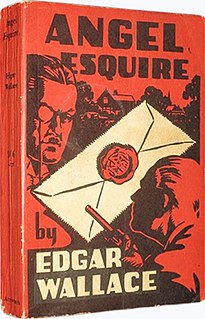
Angel Esquire is a 1908 crime mystery novel by the British writer Edgar Wallace. The wealthy owner of a gambling establishment leaves his money to whichever of his potential heirs can solve a complex puzzle. The title comes from the Scotland Yard detective Christopher Angel, who becomes involved with the case.
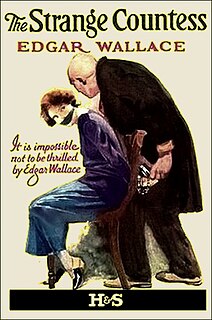
The Strange Countess is a 1925 crime novel by the British writer Edgar Wallace.
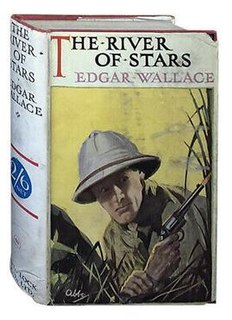
The River of Stars is a 1913 novel by the British writer Edgar Wallace. It was part of a series of stories in which the character of Commissioner Sanders appears, set in British West Africa.

The Gunner is a 1928 crime novel by the British writer Edgar Wallace.

Down Under Donovan is a 1918 crime novel by the British writer Edgar Wallace.

The Flying Fifty-Five is a 1922 sports mystery novel by the British writer Edgar Wallace set in the horse racing world.

The India-Rubber Men is a 1929 crime novel by the British writer Edgar Wallace. It was part of a series of books featuring the character Inspector Elk of Scotland Yard.
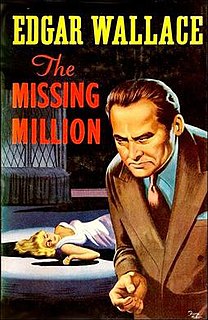
The Missing Million is a 1923 crime novel by the British writer Edgar Wallace.
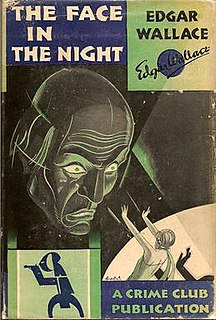
The Face in the Night is a 1924 thriller novel by the British writer Edgar Wallace.

Four Square Jane is a 1929 thriller novel by the British writer Edgar Wallace.

Grey Timothy is a 1913 sports thriller novel by the British writer Edgar Wallace. Brian Pallard, an Australian gambler arrives in Britain clashes with a rival English aristocrat at the racetrack.

The Sinister Man is a 1924 thriller novel by the British writer Edgar Wallace.

The Daffodil Mystery is a 1920 thriller novel by the British writer Edgar Wallace. It features the detective Jack Tarling and his Chinese assistant Ling Chu.
David Evans was a British screenwriter and novelist. He entered the British film industry during the 1930s where he worked on a number of quota quickies. During the 1940s he was employed on several more prestigious films such as Terence Fisher's Portrait from Life (1948). From the mid-1950s he switched to the United States working on a final screenplay Strange Intruder (1956) before switching to television.


















